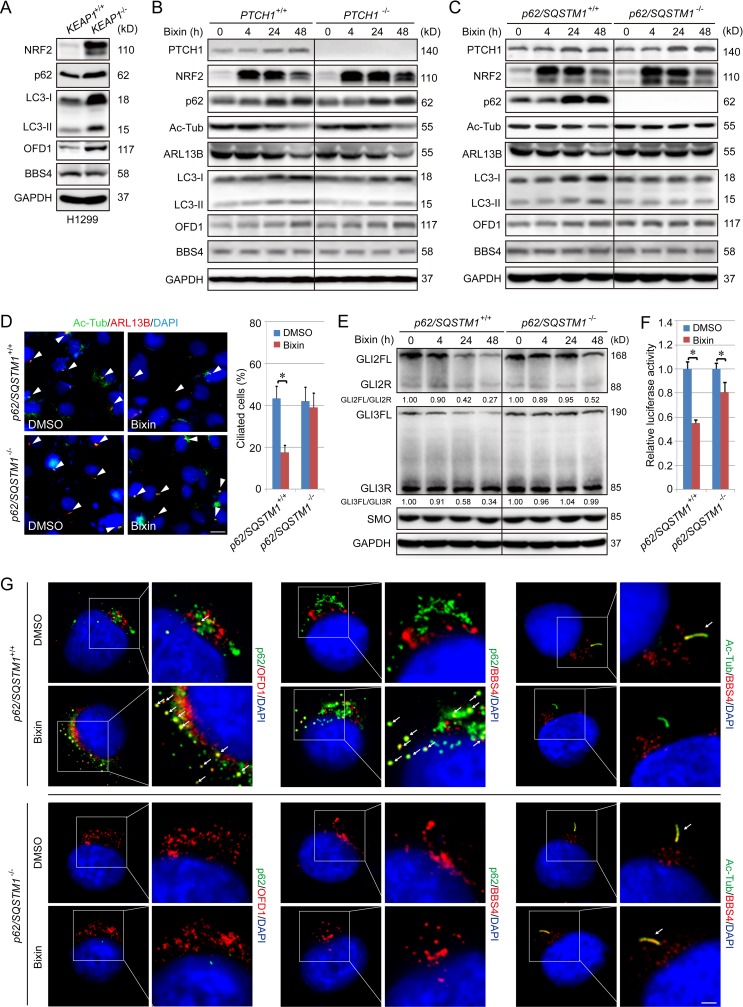Fig 5. NRF2 inhibits ciliogenesis by increasing p62-dependent inclusion body formation and suppressing the ciliary entrance of BBS4.
(A) Immunoblot analysis of p62, LC3-I and II, OFD1, and BBS4 in KEAP1+/+ and KEAP1−/− H1299 cells. Relative quantification of immunoblot results is shown in S8A Fig. (B) Immunoblot analysis of NRF2, p62, Ac-Tub, ARL13B, LC3-I and II, OFD1, and BBS4 in PTCH1+/+ and PTCH1−/− H1299 cells treated with bixin (40 μM) for 0, 4, 24, or 48 h. Relative quantification of immunoblot results is shown in S8B Fig. (C) Immunoblot analysis of NRF2, p62, Ac-Tub, ARL13B, OFD1, and BBS4 in p62/SQSTM1+/+ and p62/SQSTM1−/− H1299 cells treated with bixin (40 μM) for 0, 4, 24, or 48 h. Relative quantification of immunoblot results is shown in S8C Fig. (D) Percent ciliated cells in p62/SQSTM1+/+ and p62/SQSTM1−/− H1299 cells treated with bixin (40 μM) for 48 h. (Scale bar = 10 μm.) (E) Immunoblot analysis of GLI2FL/R and GLI3FL/R, as well as SMO protein levels following treatment with bixin (40 μM) for 0, 4, 24, or 48 h in p62/SQSTM1+/+ and p62/SQSTM1−/− H1299 cells. (F) GLI luciferase assay in p62/SQSTM1+/+ and p62/SQSTM1−/− cells treated with bixin for 48 h. Results are expressed as mean ± SD. A t test was used to compare the various groups, and p < 0.05 was considered statistically significant. *p < 0.05 compared between the two groups. (G) IF for colocalization of p62 (green)/OFD1 (red), p62 (green)/BBS4 (red), and Ac-Tub (green)/BBS4 (red), in p62/SQSTM1+/+ and p62/SQSTM1−/− H1299 cells was performed. Areas of colocalization are indicated by white arrows (scale bar = 3 μm). Ac-Tub, acetylated tubulin; ARL13B, ADP-ribosylation factor-like protein 13B; BBS4, Bardet–Biedl syndrome 4; FL, full-length activator; GAPDH, glyceraldehyde-3-phosphate dehydrogenase; IF, immunofluorescence; KEAP1, Kelch-like ECH-associated protein 1; LC3, microtubule-associated proteins 1A/1B light chain 3B; NRF2, nuclear factor-erythroid 2-like 2; OFD1, oral–facial–digital syndrome 1; PTCH1, Patched 1; R, repressor; SMO, smoothened; SQSTM1, sequestosome 1.

